-
 Bitcoin
Bitcoin $107,308.8133
-0.08% -
 Ethereum
Ethereum $2,425.9047
0.07% -
 Tether USDt
Tether USDt $1.0002
-0.01% -
 XRP
XRP $2.1169
-3.33% -
 BNB
BNB $646.5225
0.22% -
 Solana
Solana $142.1883
-1.36% -
 USDC
USDC $0.9999
0.00% -
 TRON
TRON $0.2714
-0.19% -
 Dogecoin
Dogecoin $0.1600
-3.36% -
 Cardano
Cardano $0.5545
-2.76% -
 Hyperliquid
Hyperliquid $36.5550
-1.44% -
 Bitcoin Cash
Bitcoin Cash $492.8443
1.79% -
 Sui
Sui $2.6160
-5.12% -
 Chainlink
Chainlink $13.0681
-0.80% -
 UNUS SED LEO
UNUS SED LEO $9.0028
-0.01% -
 Stellar
Stellar $0.2352
-2.94% -
 Avalanche
Avalanche $17.2295
-2.75% -
 Toncoin
Toncoin $2.8080
-1.23% -
 Shiba Inu
Shiba Inu $0.0...01122
-3.72% -
 Litecoin
Litecoin $84.5374
-0.16% -
 Hedera
Hedera $0.1433
-5.23% -
 Monero
Monero $315.9545
0.89% -
 Dai
Dai $0.9996
-0.03% -
 Ethena USDe
Ethena USDe $0.9997
-0.04% -
 Polkadot
Polkadot $3.2987
-2.83% -
 Bitget Token
Bitget Token $4.4729
2.88% -
 Uniswap
Uniswap $6.8093
-2.50% -
 Pi
Pi $0.5621
-11.98% -
 Pepe
Pepe $0.0...09222
-4.89% -
 Aave
Aave $252.2262
-2.43%
What should I do if the 10-day line turns downward but the monthly line is still upward?
When the 10-day MA turns downward but the monthly MA remains bullish, it suggests a short-term correction within a longer-term uptrend, signaling traders to assess broader market context and use additional indicators for confirmation.
Jun 26, 2025 at 08:56 pm

Understanding the 10-Day and Monthly Moving Averages
In cryptocurrency trading, moving averages are among the most widely used technical indicators. The 10-day moving average (MA) reflects short-term price trends, while the monthly moving average, often calculated over 30 days, represents long-term market sentiment. When the 10-day line turns downward, it suggests a potential short-term bearish signal. However, if the monthly line remains upward, this indicates that the overall trend is still bullish.
This divergence can confuse traders, especially those new to analyzing multiple timeframes. It's crucial to understand what each indicator signifies individually before interpreting their combined signals.
Moving averages smooth out price data to help identify trends more clearly.
Assessing Market Conditions with Multiple Timeframes
When you observe a downward shift in the 10-day MA but notice the monthly MA is still rising, it’s essential to assess the broader context of the market. This situation typically occurs during a correction or consolidation phase within an ongoing uptrend.
Traders should look at other indicators like volume, RSI (Relative Strength Index), and MACD (Moving Average Convergence Divergence) to confirm whether the downtrend in the 10-day MA is significant or just a temporary pullback.
- Volume: If volume drops during the downturn, it may indicate weak selling pressure.
- RSI: An RSI above 50 suggests the asset isn't oversold and could rebound.
- MACD: Watch for crossovers between the MACD line and signal line to gauge momentum shifts.
These tools can provide additional confirmation or caution when making decisions based on moving average crossovers.
Evaluating Risk and Position Sizing
If the 10-day MA turns down but the monthly MA remains up, your approach to risk management becomes even more critical. This is not the time to increase exposure significantly unless you're confident in the strength of the long-term trend.
Consider reducing position size temporarily until the short-term trend stabilizes. Alternatively, you might choose to hold your current position if you believe the drop is just a healthy correction within a larger bull move.
- Determine your maximum acceptable loss per trade.
- Use stop-loss orders below key support levels.
- Reassess entry points once the 10-day MA stabilizes or turns upward again.
Proper risk assessment ensures that you don’t get caught off guard by sudden market swings.
Identifying Key Support Levels and Entry Points
During such a scenario, identifying key support and resistance levels becomes vital. You can use tools like Fibonacci retracements, pivot points, or previous swing lows to determine where the price might find support.
If the price holds above a critical support level and starts to stabilize, it could be a good opportunity to re-enter or add to your existing position.
- Analyze historical price action around the same support zone.
- Look for candlestick patterns indicating reversal, such as hammer or engulfing candles.
- Wait for the 10-day MA to flatten or begin turning upward again before committing more capital.
Timing entries correctly can make a significant difference in profitability, especially in volatile crypto markets.
Monitoring On-Chain and Off-Chain Indicators
Beyond technical analysis, monitoring on-chain metrics can offer deeper insight into whether the downtrend in the 10-day MA is part of a larger trend or just noise.
Tools like Glassnode or Santiment can show you real-time data such as:
- Exchange inflows and outflows — decreasing outflows may suggest accumulation.
- Holder behavior — increasing number of long-term holders may imply underlying strength.
- Network activity — growth in active addresses or transaction volume can indicate bullish fundamentals.
Combining these insights with traditional technical indicators allows for a more holistic view of market dynamics.
Frequently Asked Questions
What does it mean when the 10-day MA crosses below the 50-day MA?
This is known as a death cross in some contexts, signaling a bearish trend. However, in cryptocurrencies, which are highly volatile, such crossovers can produce false signals. Always consider the broader trend and volume before acting.
Should I sell all my holdings if the 10-day MA turns downward?
Not necessarily. If the monthly MA is still rising, selling everything might cause you to miss a potential rebound. Consider partial profit-taking or tightening stops instead of exiting entirely.
How reliable are moving averages in crypto trading?
Moving averages are lagging indicators, so they work best when combined with leading indicators like RSI or MACD. In fast-moving crypto markets, relying solely on MAs can lead to late entries or exits.
Can I use shorter timeframes like 5-minute or 1-hour charts to spot reversals early?
Yes, but always ensure that your trades align with the higher timeframe direction. Shorter timeframes can help with timing entries but shouldn't override the main trend identified on daily or weekly charts.
Disclaimer:info@kdj.com
The information provided is not trading advice. kdj.com does not assume any responsibility for any investments made based on the information provided in this article. Cryptocurrencies are highly volatile and it is highly recommended that you invest with caution after thorough research!
If you believe that the content used on this website infringes your copyright, please contact us immediately (info@kdj.com) and we will delete it promptly.
- QFSCOIN: Your No-Sweat Ticket to Crypto Mining Riches (Bitcoin, Dogecoin, Litecoin)
- 2025-06-27 00:50:12
- Moonveil's $MORE Token: Powering the Future of Web3 Gaming with CEX Listings
- 2025-06-27 00:30:12
- Wormhole Crypto: Navigating Interoperability, Crash Risks, and 10x Potential
- 2025-06-27 00:30:12
- Kraken's Krak App: Revolutionizing Bitcoin and Crypto Payments, Ya Dig?
- 2025-06-27 00:52:13
- EthCC, Cannes, July 3rd: What's Buzzing in the Blockchain World?
- 2025-06-27 00:55:11
- Crypto Presales: Live Updates and the Latest News Shaping the Future
- 2025-06-27 00:55:11
Related knowledge
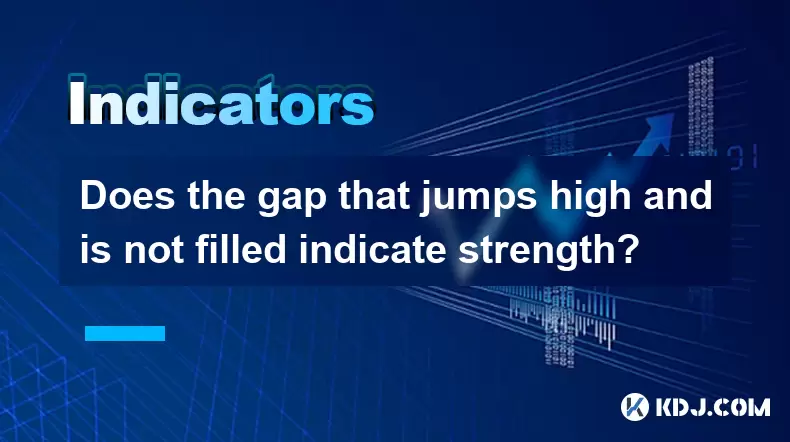
Does the gap that jumps high and is not filled indicate strength?
Jun 26,2025 at 11:36pm
Understanding the Concept of Gaps in Cryptocurrency ChartsIn the world of cryptocurrency trading, gaps refer to areas on a price chart where the price of an asset jumps significantly up or down, leaving no trading activity between two specific points. These gaps typically occur due to after-hours news, market sentiment shifts, or sudden influxes of buy/...
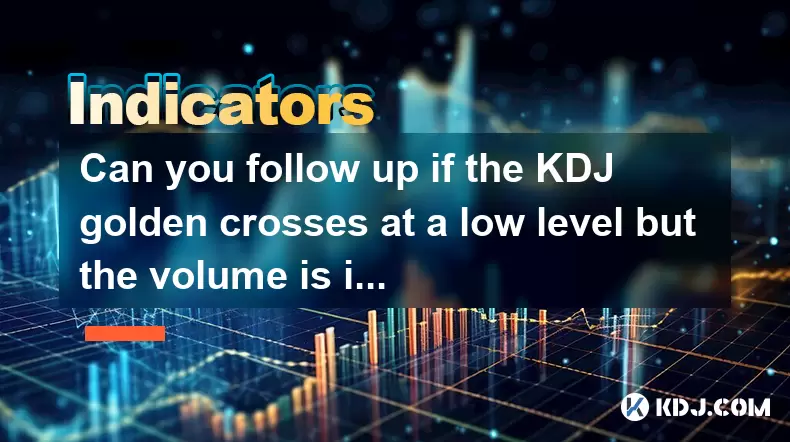
Can you follow up if the KDJ golden crosses at a low level but the volume is insufficient?
Jun 27,2025 at 12:01am
Understanding the KDJ Indicator in Cryptocurrency TradingThe KDJ indicator, also known as the stochastic oscillator, is a popular technical analysis tool used by cryptocurrency traders to identify potential buy and sell signals. It consists of three lines: the %K line, the %D line (which is a moving average of %K), and the %J line (a projection of the t...
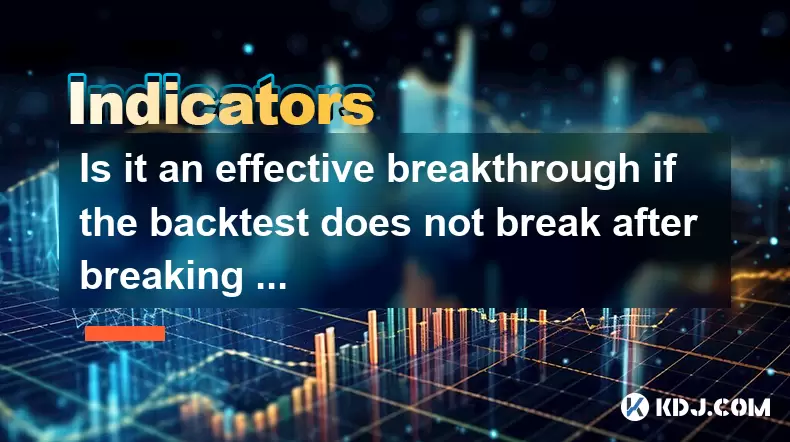
Is it an effective breakthrough if the backtest does not break after breaking through the neckline?
Jun 26,2025 at 10:08pm
Understanding the Role of Blockchain in Secure TransactionsBlockchain technology is at the heart of secure cryptocurrency transactions. Each block contains a list of transactions, and once recorded, altering past blocks becomes nearly impossible without network consensus. This immutability ensures that once a transaction is confirmed, it cannot be rever...
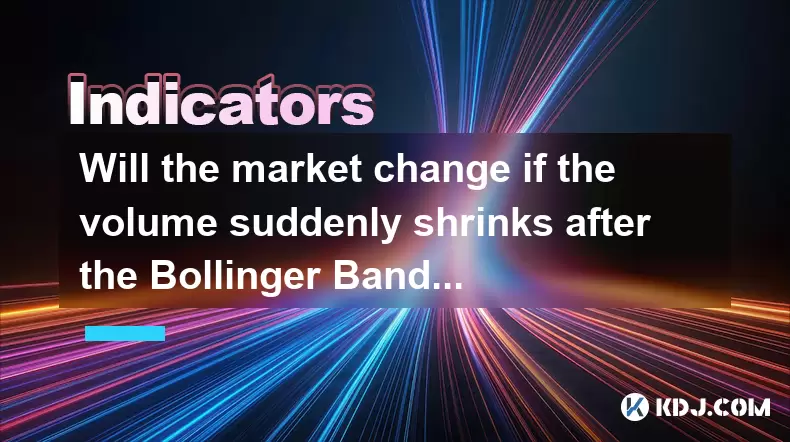
Will the market change if the volume suddenly shrinks after the Bollinger Bands open?
Jun 26,2025 at 09:56pm
Understanding the Bollinger Bands MechanismBollinger Bands are a widely used technical analysis tool that consists of a moving average and two standard deviation lines plotted above and below it. These bands dynamically adjust to price volatility, expanding during periods of high market activity and contracting when volatility decreases. Traders use thi...
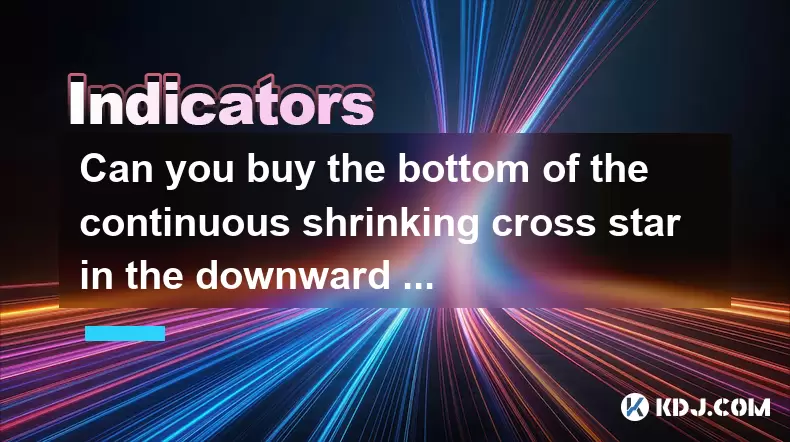
Can you buy the bottom of the continuous shrinking cross star in the downward trend?
Jun 26,2025 at 10:28pm
Understanding the Continuous Shrinking Cross Star PatternThe continuous shrinking cross star is a candlestick pattern that typically appears during a downtrend. It consists of multiple small-bodied candles with upper and lower shadows, indicating market indecision. Each subsequent candle in this pattern has a smaller body than the previous one, showing ...

Is there a main force bottom-fishing with a long lower shadow at a low position?
Jun 26,2025 at 10:56pm
Understanding the Candlestick Pattern: Long Lower Shadow at a Low PositionA long lower shadow candlestick pattern is often seen as a potential reversal signal in technical analysis. When this pattern appears at a low position, it suggests that sellers pushed prices down during the session, but buyers eventually stepped in and pulled the price back up ne...

Does the gap that jumps high and is not filled indicate strength?
Jun 26,2025 at 11:36pm
Understanding the Concept of Gaps in Cryptocurrency ChartsIn the world of cryptocurrency trading, gaps refer to areas on a price chart where the price of an asset jumps significantly up or down, leaving no trading activity between two specific points. These gaps typically occur due to after-hours news, market sentiment shifts, or sudden influxes of buy/...

Can you follow up if the KDJ golden crosses at a low level but the volume is insufficient?
Jun 27,2025 at 12:01am
Understanding the KDJ Indicator in Cryptocurrency TradingThe KDJ indicator, also known as the stochastic oscillator, is a popular technical analysis tool used by cryptocurrency traders to identify potential buy and sell signals. It consists of three lines: the %K line, the %D line (which is a moving average of %K), and the %J line (a projection of the t...

Is it an effective breakthrough if the backtest does not break after breaking through the neckline?
Jun 26,2025 at 10:08pm
Understanding the Role of Blockchain in Secure TransactionsBlockchain technology is at the heart of secure cryptocurrency transactions. Each block contains a list of transactions, and once recorded, altering past blocks becomes nearly impossible without network consensus. This immutability ensures that once a transaction is confirmed, it cannot be rever...

Will the market change if the volume suddenly shrinks after the Bollinger Bands open?
Jun 26,2025 at 09:56pm
Understanding the Bollinger Bands MechanismBollinger Bands are a widely used technical analysis tool that consists of a moving average and two standard deviation lines plotted above and below it. These bands dynamically adjust to price volatility, expanding during periods of high market activity and contracting when volatility decreases. Traders use thi...

Can you buy the bottom of the continuous shrinking cross star in the downward trend?
Jun 26,2025 at 10:28pm
Understanding the Continuous Shrinking Cross Star PatternThe continuous shrinking cross star is a candlestick pattern that typically appears during a downtrend. It consists of multiple small-bodied candles with upper and lower shadows, indicating market indecision. Each subsequent candle in this pattern has a smaller body than the previous one, showing ...

Is there a main force bottom-fishing with a long lower shadow at a low position?
Jun 26,2025 at 10:56pm
Understanding the Candlestick Pattern: Long Lower Shadow at a Low PositionA long lower shadow candlestick pattern is often seen as a potential reversal signal in technical analysis. When this pattern appears at a low position, it suggests that sellers pushed prices down during the session, but buyers eventually stepped in and pulled the price back up ne...
See all articles
























































































